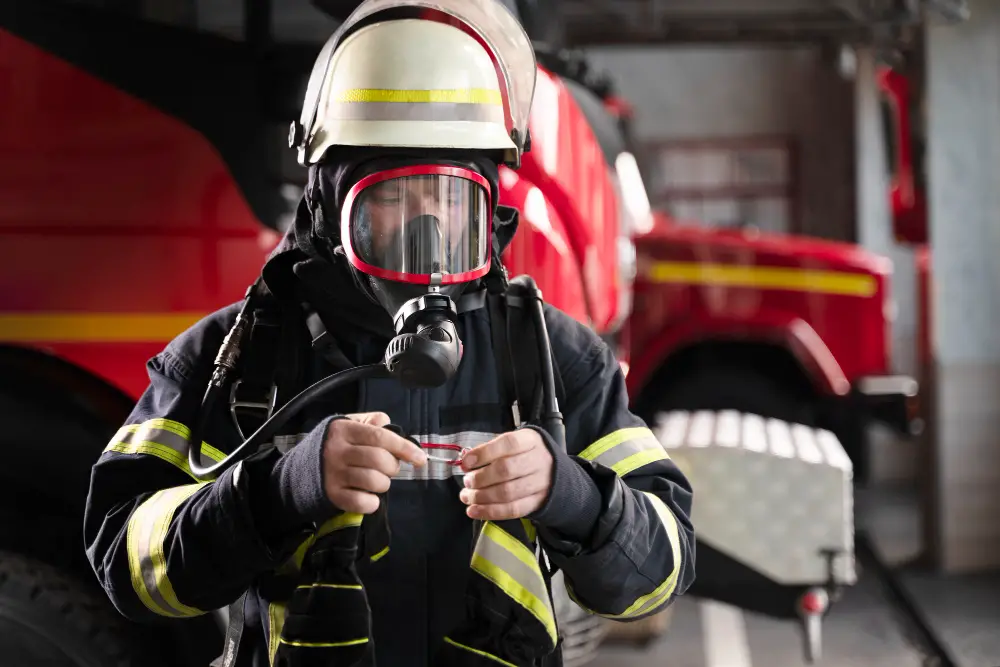In the realm of fire safety, one tool stands out as a universal symbol of preparedness and protection the fire extinguisher. From homes to workplaces, schools to public spaces, these essential devices serve as a frontline defense against the threat of flames. Let’s delve into the importance of fire extinguishers, their types, and why every individual and organization should prioritize their presence and maintenance.
The Vital Importance
Fire extinguishers represent more than just a regulatory requirement; they are crucial assets in preventing small fires from escalating into catastrophic emergencies. Rapid intervention with a fire extinguisher can contain a blaze before it engulfs property, endangers lives, or causes irreparable damage. As such, understanding their function and having them readily available can mean the difference between a minor incident and a major disaster.
Understanding Fire Classes
Not all fires are the same, and neither are fire extinguishers. Understanding the classification system is essential for choosing the right extinguisher for the type of fire likely to occur:
- Class A: Fires involving ordinary combustibles such as wood, paper, and cloth.
- Class B: Fires fueled by flammable liquids like gasoline, oil, and grease.
- Class C: Electrical fires stemming from live electrical equipment.
- Class D: Fires involving combustible metals like magnesium or titanium.
- Class K: Kitchen fires fueled by cooking oils and fats.
- https://iguestpost.com
Each class requires a specific type of extinguisher designed to combat the unique properties of the fire, emphasizing the importance of proper selection and training.
Types of Fire Extinguishers
Fire extinguishers come in various types, each tailored to address specific fire classes:
- Water extinguishers (Class A): Effective against Class A fires but not suitable for flammable liquid or electrical fires.
- Foam extinguishers (Class A and B): Versatile options suitable for combating fires involving solids and flammable liquids.
- Carbon dioxide (CO2) extinguishers (Class B and C): Ideal for electrical fires and flammable liquid fires due to their non-conductive properties.
- Dry chemical extinguishers (ABC or BC): Effective against a range of fire classes, making them suitable for general-purpose use.
- Wet chemical extinguishers (Class K): Specifically designed for kitchen fires, offering superior suppression of cooking oil and grease fires.
Maintenance and Inspection
Owning a fire extinguisher is not enough; regular maintenance and inspection are paramount to ensure their functionality when needed most. Key maintenance practices include:
- Routine visual inspections to check for damage or signs of leakage.
- Monthly checks to verify pressure levels and gauge functionality.
- Annual professional inspections and servicing to ensure compliance with regulations and standards.
Training and Education
Possessing a fire extinguisher is only half the battle; knowing how to use it effectively is equally important. Comprehensive training empowers individuals to respond swiftly and confidently in the event of a fire emergency. Training should cover proper handling techniques, understanding fire behavior, recognizing when to evacuate, and executing the PASS technique (Pull, Aim, Squeeze, Sweep) for extinguisher operation. Regular drills and refresher courses ensure that knowledge remains current and skills remain sharp, enhancing overall preparedness.
Strategic Placement
The strategic placement of fire extinguishers throughout a facility can significantly impact response time and effectiveness. Positioning extinguishers in easily accessible locations near potential fire hazards, high-traffic areas, and exits maximizes their utility in emergencies. Clear signage indicating extinguisher locations further aids in rapid identification and retrieval. Additionally, considering environmental factors such as temperature extremes, humidity, and proximity to corrosive substances ensures that extinguishers remain functional and ready for use when needed most.
Conclusion
Fire extinguishers and fire alarms Manchester are indispensable tools in safeguarding lives and property from the ravages of fire. By understanding their function, selecting the appropriate type, and prioritizing maintenance, individuals and organizations can bolster their preparedness and response capabilities. In a world where unforeseen emergencies can strike at any moment, investing in fire extinguishers is an investment in safety and peace of mind for all.







